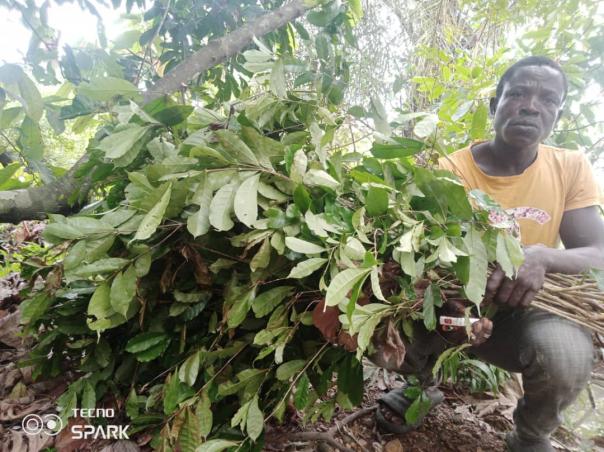
The world is in love with coffee. We drink 2.25bn cups a day of the stuff and the global market was worth US$493bn (£383bn) in 2022, according a report by researchandmarkets.com, which forecasts it will grow by almost a third to US$652bn (£507bn) by 2027.
The market faces a major problem, though, which is that while demand is rising the area of land suitable for coffee cultivation is predicted to shrink by up to a half by 2050, according to research led by Doug Richardson at the Australia-based Commonwealth Scientific and Industrial Research Organisation (CSIRO).
Coffee grows only in certain temperatures and humidities in a strip around the equator known as the bean belt, much of which is ocean. The main land areas that fall within the zone are in Central and South America, Africa and Southeast Asia – and all face the prospect of higher temperatures as a result of climate change.
But now, from Sierra Leone in west Africa, there is an intriguing development with the rediscovery of a lost local species of coffee plant that is better adapted to higher temperatures than climate-vulnerable Arabica, the main source for commercial coffee.
Lost from cultivation for more than half a century, Coffea stenophylla, to give it its scientific name, has been grown successfully at a pilot project in the east of the country following its rediscovery in the wild.
It was found after a five-year search by Sierra Leonean forestry expert Daniel Sarmu, who slogged through dense West African bush armed with little more than a pressing of a dried stenophylla leaf dating from the 1950s, before the first wild examples were found.
Now the progress made in nurseries and plantations close to where the trees were rediscovered has attracted the interest of some of the major players in the world’s coffee market.
With rising temperatures and changes in rainfall threatening to wipe out more than half current coffee production, developments in Sierra Leone offer hope for climate-resilient solutions for the world’s coffee drinkers.
The pilot project, funded by the Switzerland-based coffee trader Sucafina and run by Sarmu, now aims to establish stenophylla as the flagship product of Sierra Leone’s agricultural sector, which would be a remarkable turnaround for a species that had been exported to Europe as Sierra Leone highland coffee before being quietly forgotten.
Sarmu admits much more work needs to be done to establish the commercial viability of stenophylla, but says the progress already has been encouraging.
“The results are so positive that we believe everything is in place to potentially rejuvenate Stenophylla, a coffee that was once drunk in Paris and London but has not been sold commercially for decades. We see this as a possible future flagship product to put Sierra Leone on the world’s coffee map.”
The project has implications for the world’s coffee market as it offers hope in the face of the threat that climate change poses to the two species – Arabica and robusta – which produce the beans that go into almost all of the 400 billion cups of coffee drunk each year.
Grown commercially in more than 50 nations in an industry that generates more than 25m jobs, these two species have a weak spot: vulnerability to climate change.
What stenophylla offers, which makes it stand out from the 129 other known species of coffee, is a double whammy of great taste and heat tolerance.
In blind tastings held since the rediscovery, experts scored stenophylla as highly for taste as some high-grade Arabicas, as well as offering distinctly novel flavours.
Many of the other wild species of coffee have also been tasted over the years, but with disappointing results.
Stenophylla’s taste quality, which saw it traded and drunk in the coffee salons of Europe in the late nineteenth century, makes it a potential equivalent to Arabica and robusta.
Naturally occurring in the eastern highlands of Sierra Leone, a vestigial stenophylla farming sector flourished briefly during British colonial rule until the turn of the twentieth century when it dwindled and was forgotten as mass production of Arabica and robusta came to dominate the global market.
Sarmu and his two British collaborators, Aaron Davis from The Royal Botanic Gardens at Kew and Jeremy Haggar from the University of Greenwich, stress that more research needs to be done on the unique characteristics of stenophylla.
This includes analysis of the climate, terrain, soils and topography that favour its growth and, importantly, its yield in terms of amount of berries and the time taken for the plant to grow from a seed to productivity.
“We are learning all the time,” says Sarmu. “But the work we are doing is encouraging with, for example, plants promising to yield fruits [and therefore coffee beans] after three or four years rather than the seven or nine years suggested in some of the old references.”
That matches the lifecycle of Arabica and robusta, which typically take 3-4 years from planting a seed to harvesting fruit mature enough to produce commercial coffee.